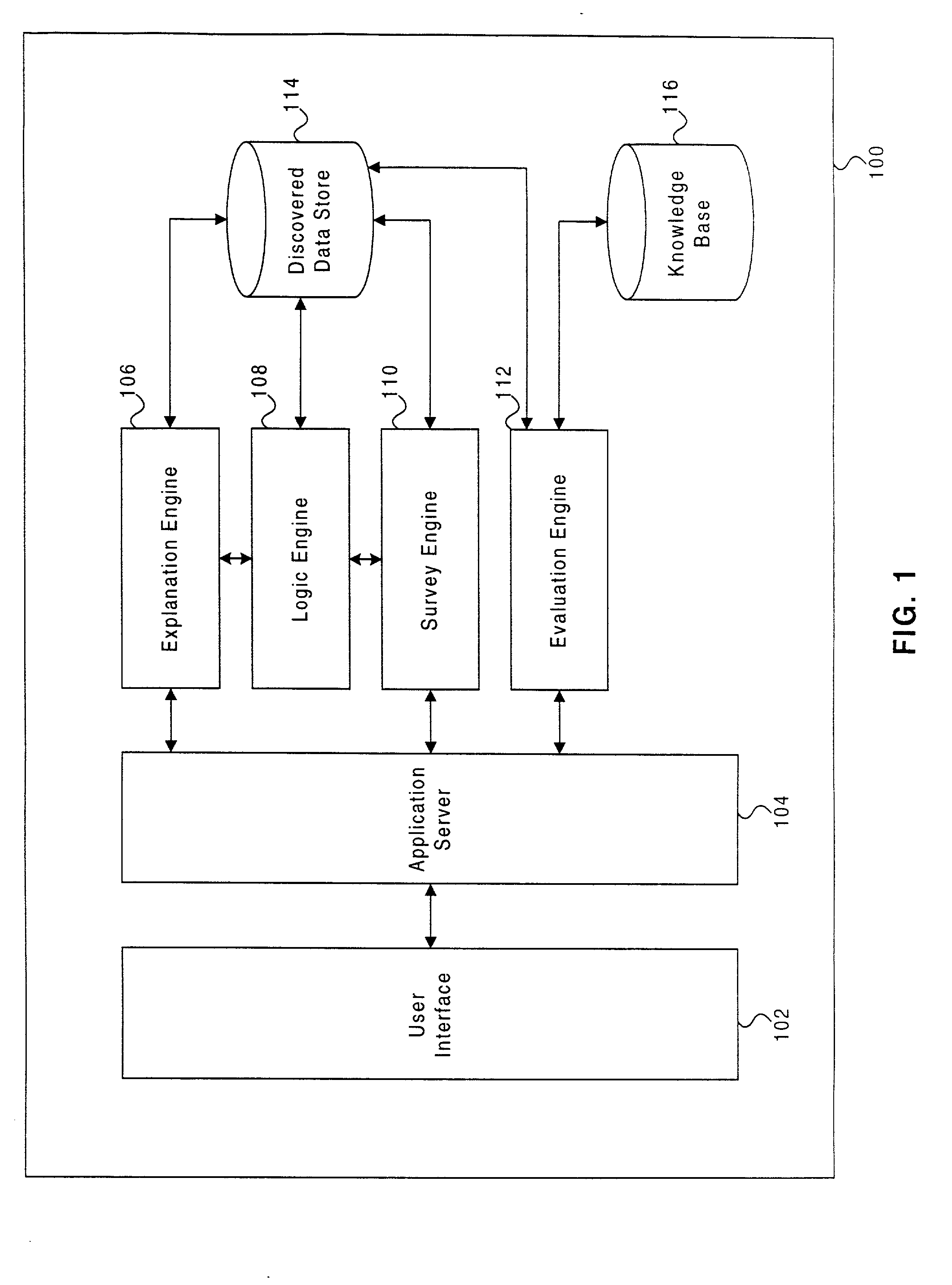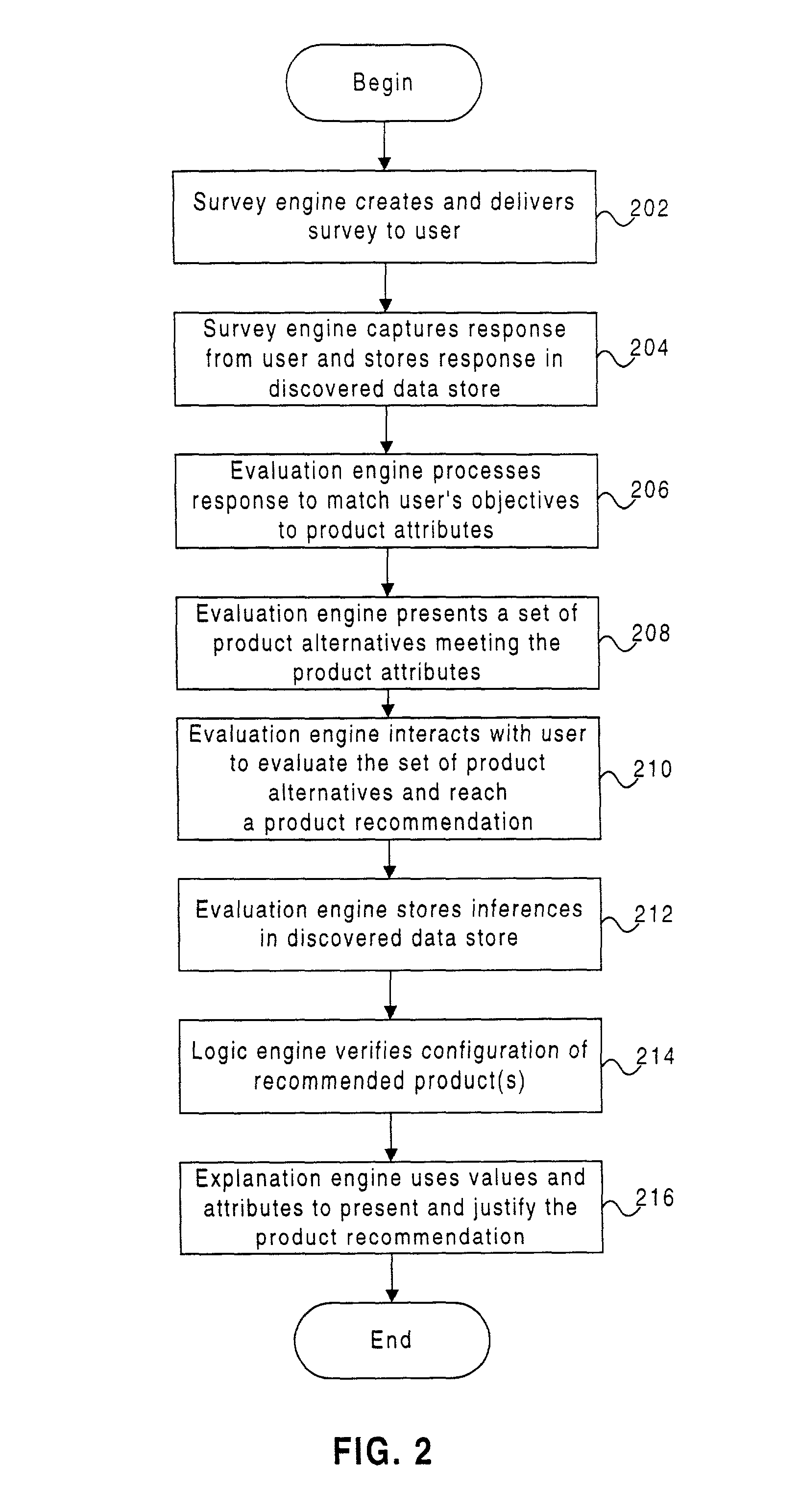However, the product recommended by conventional product recommendation engines frequently is not the best product for the customer.
This problem occurs for two reasons: first, there is an assumption that the customer understands how the different attributes affect the product's usage and value to the customer; and second, a product that is filtered out because of a customer's answer may never be offered to the customer even if it supercedes all others as the best choice based on its other attributes.
Because the conventional interaction focuses on product attributes rather than the customer's needs and objectives, the product recommendations are frequently not the best for the customer.
This process is flawed in many ways.
Another problem is that the questions would be difficult for any customer who isn't technically savvy.
The questions focus on information that the customer may not care about, and the customer likely does not understand the implications of his answers.
Overall, the conventional approach is not easy or friendly because it reaches a recommendation based on attributes of the products in the available product set, not the user's objectives.
The product recommendation process at conventional online retailers is not much improved.
Even someone well-versed in the industry may have a hard time distinguishing between digital PCS and digital cellular service.
All digital PCS products will disappear if the customer selects digital cellular, even though the customer may not understand this attribute value.
As the examples above show, conventional product recommendation systems, including online product advisors, have many flaws.
1. Individuals are asked to rate how important objectives are. Asking a customer to rank the importance of an objective is ambiguous and does not result in a better decision. For instance, a customer buying a car might decide that cost is not too important, rating it a 2 (on a 1-5 scale of importance where 5 is most important) while rating reliability a 4. This suggests that reliability is twice as important as cost to this customer. However, this rating does not suggest how much more the customer would pay to increase reliability. Does it mean the customer would be willing to double the price of the car to improve the reliability by 50 percent? That seems very unlikely. Given this
rating system, one cannot conclude anything about how much the additional reliability is worth in terms of increased costs.
2. Most product recommendation systems do not elicit customer values. Most product recommendation engines allow a customer to choose among products using screening criteria as described above to help customers focus on product attributes. If the product recommendation
system instead focused on the customer's needs and objectives, it would be better able to help the customer select the best product.
3. Most product recommendation systems do not retain information about customer values. The few product recommendation engines that do gather information about a customer's values do not preserve that information, partly because the information does not have much future value. Instead, conventional systems might keep a
record of the customer's purchases and the related product attributes. Without information about a customer's values, these systems can only recommend future products and services based on the attributes of products purchased in the past.
4. The basis for recommending a product is not given. Conventional product recommendation engines recommend a product that matches the product attributes given by the customer. This explanation can be presented to the customer, but a
list of product attributes does not explain to the customer why the recommended product meets the customer's objectives.
5. Complex product recommendations require human intervention. Typical product recommendation engines cannot automatically recommend a complex product (e.g., a home mortgage) or one that has product dependencies (e.g., a wireless phone and a service plan). Instead, these systems either present several options and force the customer to determine a recommendation or gather data from the customer and follow up with
human interaction, e.g., a
telephone call, to make a recommendation.
However, all of these systems lose the advantages of self-service product recommendation assistance.
For example, the retailer must incur significant expense training its staff.
Also, the service provided can be inconsistent based on different levels of expertise among the staff.
These and other problems with conventional product recommendation engines result in customers who are more likely to be frustrated by the process and end up selecting inferior products.
In the wireless industry, this can lead to unmet expectations that result in both brand
dilution and churn (i.e., the process whereby customers switch from one carrier to another, with the goal of getting better services or products).
These systems fall victim to the same problems discussed above, failing to obtain or consider a specific customer's needs and objectives.
 Login to View More
Login to View More  Login to View More
Login to View More 


